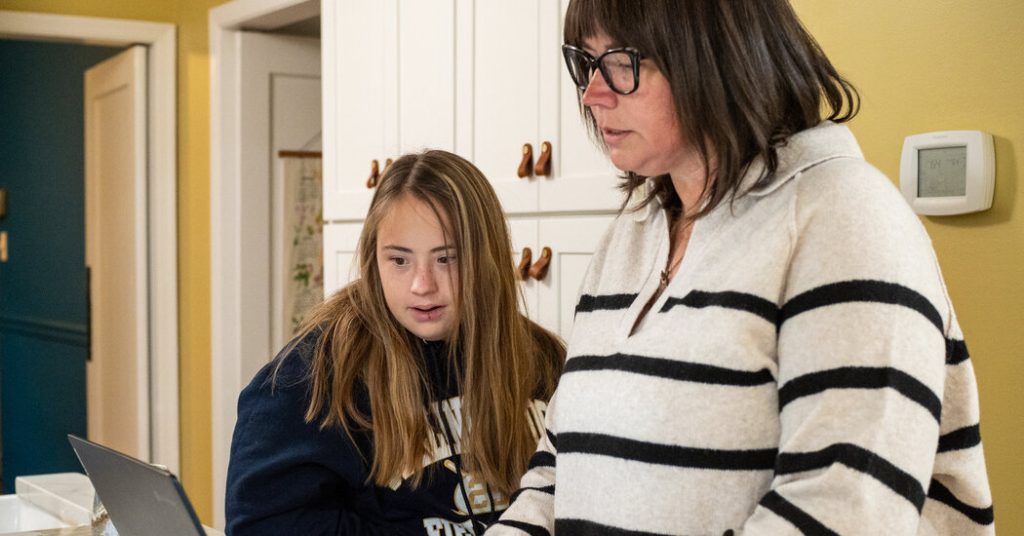The U.S. government allocates significant funding to states to support students with disabilities in transitioning from school to the workforce. These programs offer job training, career counseling, and support in securing employment. However, many eligible students do not receive these services, often because their families and schools are unaware they exist. Among all states, New Jersey has the lowest participation rate, with only 2% of eligible students receiving assistance. This failure leaves thousands of students without critical support, leading to missed employment opportunities and financial hardship.
The Promise of Job Training Programs
In theory, these programs are designed to help students with disabilities develop essential workplace skills. Participants receive training in resume writing, time management, and professional communication. Some even secure internships or receive on-the-job support. The goal is to ease the transition from high school to the workforce, helping students gain meaningful employment.
For example, in Boonton, New Jersey, career coach Linda Mauriello has helped students with disabilities successfully enter the workforce. One of her students, who has multiple disabilities, trained in a school cafeteria, secured a job there, and has maintained employment for over five years. Another student with autism trained at Walgreens, learning how to manage time and interact with customers. He was eventually hired and is now responsible for opening the store.
While these success stories highlight the program’s potential, they are rare. Nationwide, only about 295,000 students received some form of job training in 2023, despite an estimated 3.1 million students being eligible. New Jersey, in particular, has one of the worst records in the country, serving just 1,370 out of more than 80,000 eligible students.
Why Are So Few Students Receiving Help?
Despite federal mandates, job training programs for students with disabilities remain underutilized due to a combination of systemic issues:
1. Lack of Awareness
Many parents and educators are unaware that these services exist. Without proper outreach from state agencies, families often miss out on opportunities that could significantly improve their children’s future.
2. Bureaucratic Challenges
Even when families discover these programs, accessing them can be difficult. New Jersey’s decentralized school governance system complicates the process, making it harder for state agencies to connect with local schools. Additionally, long wait times and miscommunication between schools and state counselors result in missed opportunities.
For instance, Bridgette Breece, a mother from New Jersey, learned about the state’s vocational rehabilitation program through a Facebook post. When she reached out, a counselor wrongly informed her that her son wasn’t eligible until he turned 18. As a result, her son, who excelled in hands-on work but struggled with reading, missed out on vital training. After graduating, he found work as a tow-truck driver but had to quit due to anxiety related to overnight emergency shifts. If he had received job training in high school, he might have learned how to request accommodations or explore other career options better suited to his needs.
3. Insufficient Funding and Staffing
Although federal law requires states to allocate at least 15% of their vocational rehabilitation funds to school-age job training, many states struggle to meet this requirement. In 2021, 23 states failed to spend the required amount. By 2022, this number dropped to 10, but many states continue to provide inadequate services. With limited funding and staff, job training counselors are stretched thin, making it difficult to serve all eligible students.
4. Inconsistent Program Quality
Even when students access job training programs, the quality varies widely. Some states have strong partnerships with businesses and offer hands-on job placements, while others provide only minimal services. Without strong oversight, there is little accountability for programs that fail to deliver meaningful results.
The Importance of Early Job Training
Experts agree that early exposure to job training significantly improves long-term employment outcomes for students with disabilities. According to Maureen McGuire-Kuletz of George Washington University, pre-employment transition services are crucial in preparing students for independence.
For more than 30 years, federal education laws have required schools to assist students with disabilities in planning for life after high school. However, many schools lack the resources to provide specialized job training, leaving a gap that vocational rehabilitation services are supposed to fill.
Before 2014, state vocational rehabilitation agencies primarily served adults. Congress later expanded the program to include students as young as 14. The goal was to provide students with early career exposure, allowing them to develop skills and confidence before entering the workforce. Unfortunately, many states have failed to fully implement these changes.
Success Stories: What Happens When the System Works?
Some students do manage to access job training and successfully transition into fulfilling careers. Maureen Piccoli Kerne, who runs a transition program in Ridgefield, New Jersey, emphasizes the importance of early career counseling. She recently worked with a student who loved libraries. Though her developmental disability prevented her from attending a traditional college, she took online courses to become a librarian’s assistant and eventually secured a job at a public library.
Such success stories demonstrate what is possible when students receive proper guidance. However, for every student who finds a fulfilling job, thousands more are left behind.
Challenges in Oversight and Accountability
A significant factor in the program’s failure is the lack of federal oversight. While the U.S. Department of Education acknowledges that job training services must be made available to all eligible students, there is no requirement that every student receives them. This loophole allows states to underperform without facing consequences.
Julie Christensen, executive director of the Association of People Supporting Employment First, criticizes the lack of enforcement. “It shouldn’t be the Wild Wild West,” she says, referring to the unregulated nature of these programs. While some states have improved their compliance, many continue to fall short.
Moving Forward: How to Fix the System
1. Increased Awareness and Outreach
State governments must actively promote job training programs to parents and educators. Schools should receive clear guidelines on how to connect students with vocational rehabilitation services.
2. Simplifying the Process
Streamlining the application process would help more students access job training. Reducing wait times and improving communication between schools and state agencies would make the system more efficient.
3. More Funding and Staff
Additional funding is needed to hire more counselors and expand program offerings. Investing in job training now will pay off in the long run by reducing unemployment and reliance on social services.
4. Stronger Accountability Measures
Federal agencies must hold states accountable for failing to provide services. Regular audits and penalties for non-compliance could ensure that funds are used effectively.
Conclusion
Job training programs for students with disabilities have the potential to transform lives. When implemented correctly, they provide young people with the skills and confidence needed to secure meaningful employment. However, due to lack of awareness, bureaucratic hurdles, and inconsistent program quality, most eligible students never receive this support.
Fixing this system requires a combination of increased funding, better outreach, and stricter oversight. Until these changes are made, thousands of young people with disabilities will continue to face unnecessary obstacles in their pursuit of employment and independence.
Disclaimer – Our editorial team has thoroughly fact-checked this article to ensure its accuracy and eliminate any potential misinformation. We are dedicated to upholding the highest standards of integrity in our content.





More Stories
The Promise of Job Training Programs for Disabilities
The Promise of Job Training Programs for Disabilities
The Promise of Job Training Programs for Disabilities